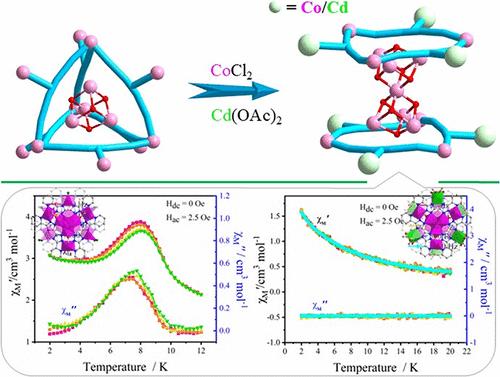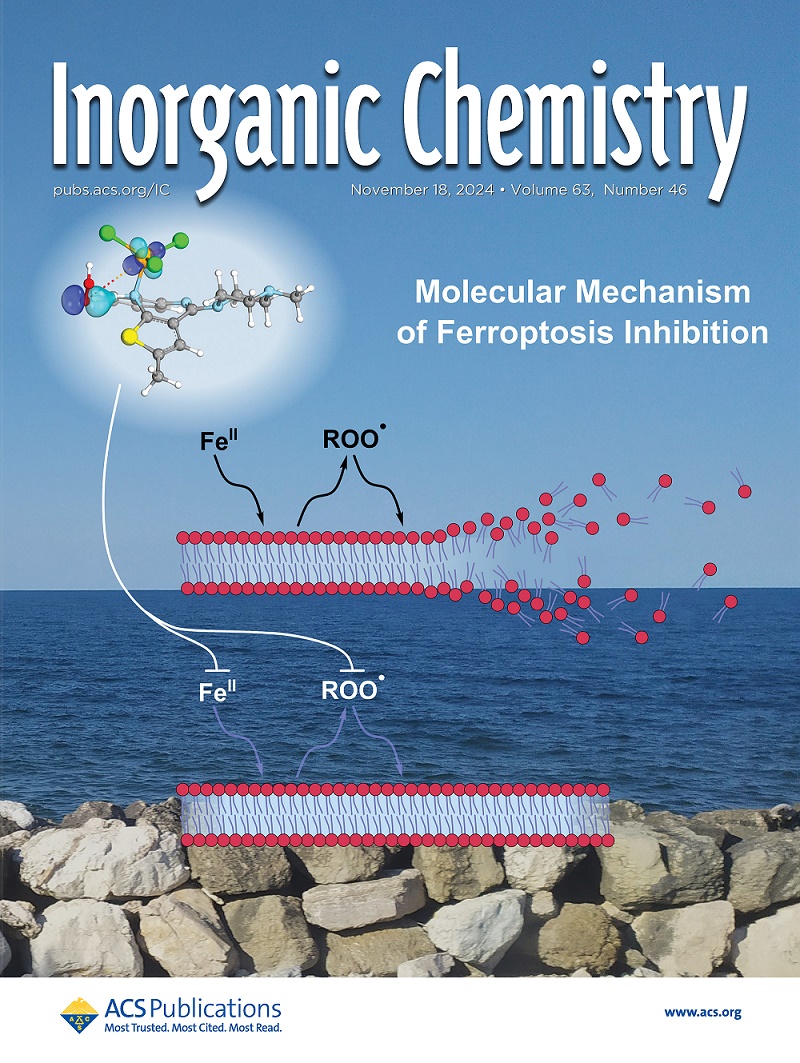{Co14}前体同源和异金属中心的{CoIIICoII12MII6} (M = CoII/CdII)聚集体的构建和磁性差异
IF 4.7
2区 化学
Q1 CHEMISTRY, INORGANIC & NUCLEAR
引用次数: 0
摘要
复杂聚集体的可控合成引起了科学家们的广泛关注。在这项工作中,由预制的{Co14}团簇构建具有相似骨架的同质金属和异质金属{CoIIICoII12MII6} (M = CoII/CdII)聚集体,由两个[Co3M3(dpbt)3]外围和一个中心[Co7(OH)8]顶点融合的双立方体组成,并通过单晶x射线衍射和XPS, ICP-MS, SEM (EDX)等进行了表征。然后,在顺磁性CoII离子和反磁性CdII离子点缀下,进一步分析了它们的结构和磁性差异。有趣的是,在引入CdII离子后,{CoIIICoII18}中的自旋扭曲行为在{CoIIICoII12CdII6}中被抑制。本文章由计算机程序翻译,如有差异,请以英文原文为准。

Construction and Magnetic Difference of {CoIIICoII12MII6} (M = CoII/CdII) Aggregates with Homo- and Heterometallic Centers Derived from {Co14} Precursors
Controllable synthesis of sophisticated aggregations has attracted wide attention from scientists. In this work, homo- and heterometallic {CoIIICoII12MII6} (M = CoII/CdII) aggregates with similar skeletons, composed of two [Co3M3(dpbt)3] peripheries and a central [Co7(OH)8] vertex-fused double-cubane, were constructed from prefabricated {Co14} clusters and characterized by single-crystal X-ray diffraction and XPS, ICP-MS, SEM (EDX), and so on. And then, the structure and magnetic differences of them had been further analyzed under dotted with paramagnetic CoII ions and/or diamagnetic CdII ions. Interestingly, the spin canting behavior in {CoIIICoII18} was suppressed in {CoIIICoII12CdII6}, upon the introducing of CdII ions.
求助全文
通过发布文献求助,成功后即可免费获取论文全文。
去求助
来源期刊

Inorganic Chemistry
化学-无机化学与核化学
CiteScore
7.60
自引率
13.00%
发文量
1960
审稿时长
1.9 months
期刊介绍:
Inorganic Chemistry publishes fundamental studies in all phases of inorganic chemistry. Coverage includes experimental and theoretical reports on quantitative studies of structure and thermodynamics, kinetics, mechanisms of inorganic reactions, bioinorganic chemistry, and relevant aspects of organometallic chemistry, solid-state phenomena, and chemical bonding theory. Emphasis is placed on the synthesis, structure, thermodynamics, reactivity, spectroscopy, and bonding properties of significant new and known compounds.
 求助内容:
求助内容: 应助结果提醒方式:
应助结果提醒方式:


